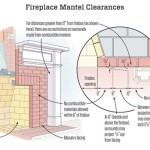Natural Gas Outdoor Fireplaces: A Comprehensive Guide
Outdoor fireplaces have become increasingly popular as homeowners seek to extend their living spaces beyond the confines of their homes. Among the various fuel options available, natural gas stands out for its convenience, clean burning characteristics, and consistent fuel supply. This article delves into the multifaceted aspects of natural gas outdoor fireplaces, exploring their advantages, installation considerations, safety protocols, and maintenance requirements.
Advantages of Natural Gas Outdoor Fireplaces
Natural gas offers a compelling array of benefits compared to other fuel sources for outdoor fireplaces, such as wood or propane. These advantages contribute significantly to its growing popularity among homeowners seeking a hassle-free and environmentally conscious outdoor heating solution.
Convenience: One of the most prominent advantages of natural gas is its inherent convenience. Unlike wood-burning fireplaces that require the manual gathering, stacking, and lighting of wood, natural gas fireplaces ignite with the simple turn of a valve or the push of a button. This eliminates the need for physical labor and ensures a readily available source of heat and ambiance whenever desired. Furthermore, the consistent fuel supply through underground pipelines eliminates the need for frequent refills, as is the case with propane tanks. This consistent availability ensures uninterrupted enjoyment of the fireplace, making it ideal for spontaneous gatherings or relaxing evenings outdoors.
Clean Burning: Natural gas burns much cleaner than wood, producing significantly fewer emissions, including particulate matter and greenhouse gases. This cleaner combustion contributes to improved air quality and a reduced environmental footprint. Wood-burning fireplaces are known to release significant amounts of smoke, which can be detrimental to respiratory health and contribute to air pollution. Natural gas, on the other hand, produces relatively little smoke and ash, making it a more environmentally responsible choice. This characteristic is particularly important for homeowners who are conscious of their impact on the environment and wish to minimize their contribution to air pollution.
Consistent Fuel Supply: As previously mentioned, natural gas is supplied through underground pipelines, providing a continuous and reliable fuel source. This eliminates the need to monitor fuel levels or worry about running out of fuel during a gathering. With propane, homeowners need to regularly check the tank levels and arrange for refills when necessary, which can be inconvenient and disruptive. The consistent supply of natural gas ensures that the fireplace is always ready to use, adding to its overall convenience and user-friendliness. This reliability is especially valuable for those who entertain frequently or who rely on their outdoor fireplace as a primary source of heat during colder months.
Controlled Heat Output: Many natural gas fireplaces feature adjustable flame heights and heat output, allowing users to customize the level of warmth and ambiance to their preferences. This level of control is not typically available with wood-burning fireplaces, where the heat output is largely dependent on the amount and type of wood being burned. The ability to adjust the flame height and heat output of a natural gas fireplace makes it suitable for a variety of weather conditions and personal preferences. On a mild evening, the flame can be set low for a subtle ambiance, while on a colder night, it can be turned up to provide more warmth.
Aesthetic Versatility: Natural gas fireplaces are available in a wide range of styles and designs, allowing homeowners to choose a model that complements their outdoor décor and architectural style. From sleek and modern designs to rustic and traditional styles, there is a natural gas fireplace to suit virtually any aesthetic preference. This versatility allows homeowners to seamlessly integrate the fireplace into their outdoor living space, creating a cohesive and visually appealing environment. The fireplaces can be incorporated into custom-built outdoor kitchens, patios, or seating areas, adding both functionality and aesthetic appeal.
Installation Considerations for Natural Gas Outdoor Fireplaces
Proper installation is crucial for the safe and efficient operation of a natural gas outdoor fireplace. It is highly recommended that a qualified and licensed professional handle the installation process to ensure compliance with local codes and regulations and to minimize the risk of gas leaks or other hazards.
Gas Line Connection: Connecting the fireplace to the existing natural gas line requires careful planning and execution. The gas line must be properly sized to accommodate the fireplace's gas consumption requirements, and all connections must be leak-tested to ensure a secure and safe installation. It is vital to consult with a qualified plumber or gas fitter to determine the appropriate gas line size and to ensure that all connections are made according to industry standards. Improperly sized gas lines can lead to insufficient gas pressure, resulting in a weak or inconsistent flame. Leak testing is essential to prevent gas leaks, which can be extremely dangerous and pose a significant fire hazard.
Ventilation Requirements: While natural gas burns relatively cleanly, proper ventilation is still necessary to prevent the accumulation of carbon monoxide, a colorless and odorless gas that can be deadly. The fireplace should be installed in a well-ventilated area, away from enclosed spaces or obstructions that could impede airflow. Carbon monoxide detectors should also be installed in nearby structures to provide an early warning in the event of a leak. Understanding and adhering to ventilation requirements is crucial for ensuring the safety of occupants and preventing carbon monoxide poisoning.
Clearances to Combustible Materials: Maintaining adequate clearances between the fireplace and any combustible materials, such as wood siding, furniture, or vegetation, is essential to prevent fire hazards. The manufacturer's instructions will specify the minimum clearance requirements, which must be strictly adhered to. Failure to maintain proper clearances can result in the ignition of nearby materials, leading to a fire. It is important to carefully assess the surrounding environment and ensure that all combustible materials are located at a safe distance from the fireplace.
Foundation and Support: The fireplace must be installed on a stable and level foundation that can support its weight. Concrete pads or reinforced decks are typically used to provide a solid base. Ensuring a stable foundation prevents the fireplace from shifting or settling over time, which could compromise its structural integrity and safety. The foundation should be designed to withstand the weight of the fireplace and any additional loads, such as snow or wind. A properly constructed foundation is essential for the long-term durability and safety of the fireplace.
Local Codes and Regulations: It is imperative to comply with all local building codes and regulations regarding the installation of natural gas fireplaces. These codes may specify requirements for gas line connections, ventilation, clearances, and inspections. Failure to comply with local codes can result in fines, delays, or even the removal of the fireplace. Contacting the local building department before starting the installation process is crucial to ensure compliance and avoid any potential issues. Obtaining the necessary permits and scheduling inspections will help to ensure that the installation is performed safely and according to code.
Safety and Maintenance of Natural Gas Outdoor Fireplaces
Proper safety and maintenance practices are crucial for ensuring the longevity and safe operation of natural gas outdoor fireplaces. Neglecting these aspects can lead to hazardous situations and costly repairs.
Regular Inspections: Periodic inspections of the fireplace are essential to identify any potential problems, such as gas leaks, damaged components, or obstructed vents. These inspections should be performed by a qualified technician, who can assess the condition of the fireplace and recommend any necessary repairs or maintenance. Regular inspections can help to prevent minor issues from escalating into major problems, saving time and money in the long run. The frequency of inspections will depend on the usage of the fireplace and the manufacturer's recommendations.
Cleaning and Debris Removal: Keeping the fireplace clean and free of debris, such as leaves, twigs, and spiderwebs, is important for maintaining its optimal performance and preventing fire hazards. Regularly clean the burner area and vents to ensure proper airflow and combustion. Debris can accumulate in the burner area and vents, obstructing airflow and causing inefficient combustion. This can lead to a reduced flame, increased emissions, and a potential fire hazard. Regular cleaning will help to keep the fireplace operating safely and efficiently.
Gas Leak Detection: Be vigilant for any signs of a gas leak, such as a rotten egg smell, hissing sound, or bubbles forming in standing water near the fireplace. If a gas leak is suspected, immediately turn off the gas supply and contact a qualified gas technician. Do not attempt to repair the leak yourself, as this could be extremely dangerous. Gas leaks can pose a significant fire and explosion hazard, and it is crucial to address them promptly and professionally. Carbon monoxide detectors should be installed and regularly tested to provide an early warning in the event of a gas leak.
Professional Servicing: Schedule regular servicing with a qualified technician to ensure that the fireplace is operating safely and efficiently. The technician can inspect the gas line, burner assembly, and other components to identify any potential problems and perform any necessary repairs or adjustments. Professional servicing can help to extend the lifespan of the fireplace and prevent costly repairs in the future. The frequency of servicing will depend on the usage of the fireplace and the manufacturer's recommendations.
Emergency Procedures: Familiarize yourself with the emergency procedures for shutting off the gas supply and contacting emergency services in the event of a fire or gas leak. Post the emergency contact information near the fireplace for easy access. Knowing how to react in an emergency situation can save lives and prevent further damage. Practice the emergency procedures with family members to ensure that everyone is aware of what to do in the event of a fire or gas leak.
By adhering to these safety and maintenance practices, homeowners can ensure that their natural gas outdoor fireplace provides years of enjoyment and warmth without compromising safety. Regular inspections, cleaning, and professional servicing are essential for maintaining the fireplace's optimal performance and preventing potential hazards.

Cal Flame Stone Veneer Gas Outdoor Fireplace Frp908 3 Modern Ions

Napoleon Riverside 42 Clean Face Outdoor Gas Fireplace Natural The Professionals

How Do I Build A Diy Fire Pit For Natural Gas Starfire Direct

Outdoor Gas Fireplaces Landscaping Network

Sedona Outdoor Fireplace Round Propane Natural Gas Fire Table

Outdoor Fireplaces Backyard Sprawl

Allen Roth 40000 Btu Wood Look Steel Liquid Propane Outdoor Fireplace In The Gas Fireplaces Department At Com

Empire White Mountain Hearth Rose Coastal Collection Outdoor Fir Fireplaces Usa

Outdoor Fire Features Pits Bowls In Colorado

Cal Flame Outdoor Fireplace Steel Frame Frp 906 1 For








